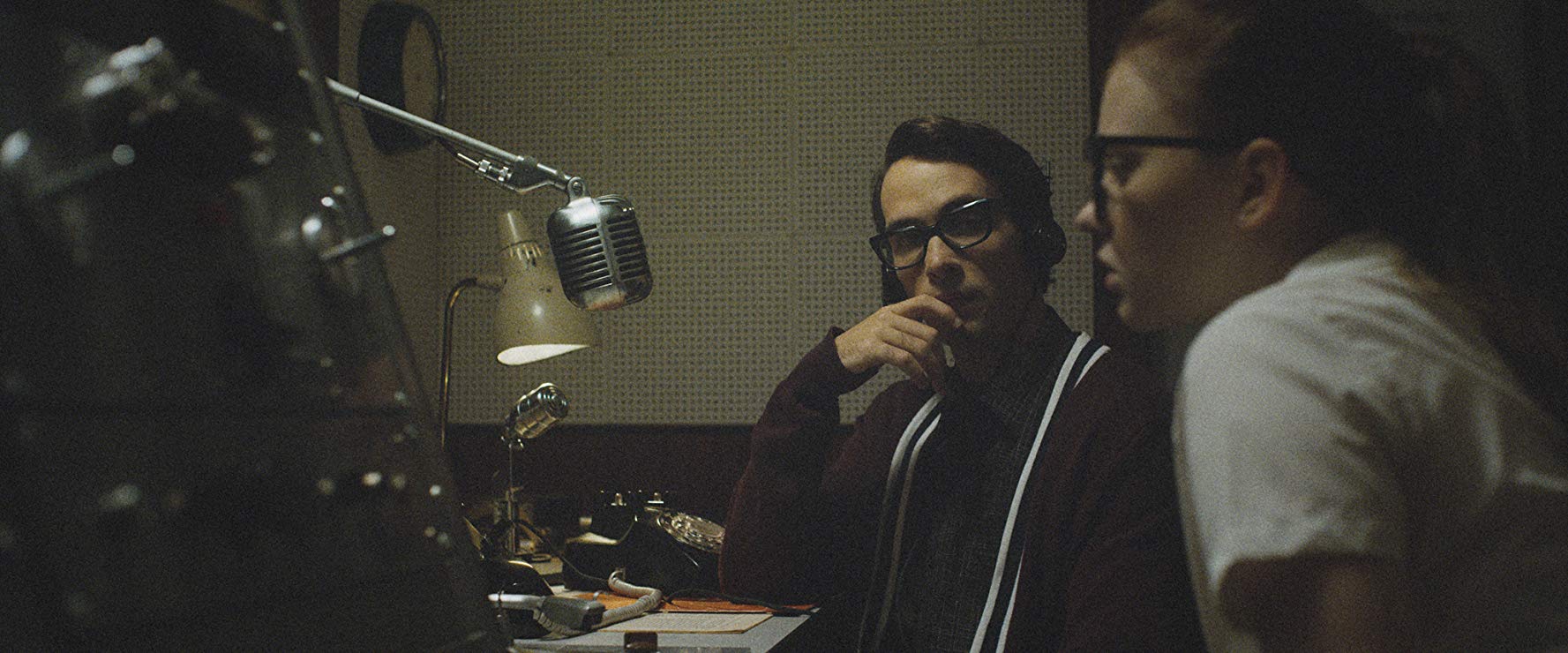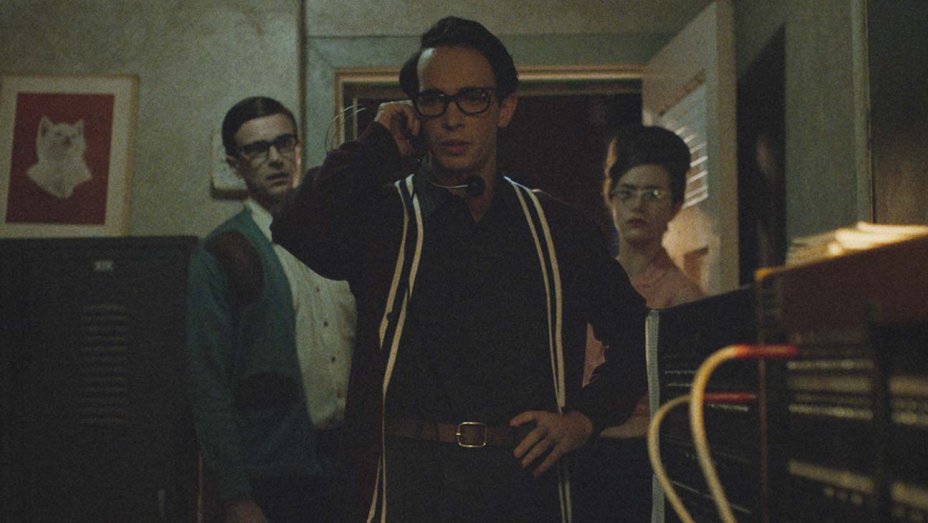THE VAST OF NIGHT. From the depths of the night comes a small, great science fiction film

Already during the screening of “The Vast of Night,” I longed to return to the days when, as a teenager, I would immerse myself in fantastic stories written in the mid-20th century. The narrative and plot simplicity did not detract but rather highlighted the innovative, perhaps naïve from today’s perspective, ideas about future worlds, encounters with aliens, artificial intelligence, or a much more advanced humanity. There is even a scene in Andrew Patterson‘s debut where the main characters discuss inventions that are supposed to change human daily life—superfast trains reaching speeds over 2000 km/h, radio-controlled cars, and even telephones with small screens. Everett, a small-town radio host, cannot believe in the last invention. This is one of two moments in the film where the creators seem to wink at the audience. Everything else is so credible, sincere, and filled with an incredible tenderness for that particular moment in sci-fi that it feels like experiencing a lost classic from the 1950s.
The film is set in that period, in a small town in the southern United States. The small community gathers to watch a local basketball game, but teenage Fay and the aforementioned Everett have to work that evening, she at the telephone exchange, he at the local radio station. Soon, they both start hearing a mysterious signal, while people on the other end of the line report seeing something in the sky. The fast-talking and quick-thinking boy and the brave, resolute girl—brilliantly portrayed by the incredibly natural Jake Horowitz and Sierra McCormick—try to find out what is really happening in their town.

“The Vast of Night” garnered attention on the festival circuit, but aside from high ratings from critics, I knew little about Andrew Patterson’s film, deliberately avoiding the trailer as well. It is a production without big names or an advertising campaign, but such films can be the most surprising. After watching it on Amazon Prime (previously, Amazon released it in drive-in theaters in the United States, which I find to be an inspired idea fitting the film’s character), I can confidently say it is one of the best debuts in American sci-fi cinema in years, a work of great elegance, fully aware of its identity, referring to the best traditions, not only within its genre.
The language used by the characters, their behavior, the look of the town and its inhabitants, and even the way the creators approach the UFO topic, focusing on the impact of the mere possibility of first contact—all contribute to a work that seems to perfectly understand the stylistic nuances of sci-fi from that era. The shots are long, the editing lacks the aggression of contemporary cinema (except for quicker cuts during console scenes), and the predominantly string-based music adds elegance and the necessary tension to the whole.
Patterson’s talent lies in bringing this rigid structure to life with directorial mastery, expertly controlling the image and sound. On one hand, he is humble before the excellently written script by James Montague and Craig W. Sanger (also debutants!), and on the other, he can translate the excitement that accompanied reading sci-fi stories from the so-called golden age into the language of cinema. A wonderful example of this is a four-minute camera ride through the town, from Fay’s telephone exchange to Everett’s radio station, showcasing the sleepy town and the only lively point that evening—the sports hall where almost all the residents have gathered. It is an impressive production moment, also reminiscent of the famous point of view of the demonic force in “The Evil Dead” (another nod to Sam Raimi’s horror is the reenactment of a recorded incantation and its unexpected consequences). Simultaneously, the director allows himself to do something quite different, forgoing the image in favor of sound alone. The radio monologues are so fascinating and well-delivered that Patterson darkens the screen in a few moments, aware of the visual medium’s redundancy.

“The Vast of Night” – like experiencing a lost classic
Perhaps the greatest value of this debut lies not in the skill with which it reaches into classic sci-fi, its ideas, and aesthetics. The director takes us on a journey to the seemingly idyllic 1950s, where everyone seems to trust each other, no one locks their doors, even at night, and lies and curses are something reprehensible, requiring immediate criticism. This culture charms, appearing as extraordinary from today’s perspective as the mysterious objects in the sky, but not as disturbing. It appears as something lost, and the longing for it goes hand in hand with the typical sci-fi curiosity about tomorrow.
The encounter with the unknown thus seems to be a pretext for telling a story about a world as unreal as the fantastic one, yet simultaneously very believable. Perhaps because the main characters are flesh-and-blood individuals, not just pretextual figures. The script forces them to confront racial issues, the fear of a Soviet invasion, and the memory of an accusation of infanticide—all of which appear only briefly but cannot be overshadowed by the lively chase after the supposed UFO. It is easy to be swept up in the nostalgia emanating from the screen, but following every word directed at or uttered by Everett and Fay reveals the hidden truth of those times and the people living then, beneath the costume of sci-fi.
Patterson’s debut works both as a tribute to the tradition of American sci-fi and as a portrayal of that culture—beautiful, pure, and now inaccessible. “The Vast of Night” is more than just an attempt to skillfully reference sci-fi cinema and literature from over half a century ago, but not less effective than the much more elaborate yet thematically similar “Close Encounters of the Third Kind” by Steven Spielberg. Patterson’s debut succeeds both as a homage to the American sci-fi tradition and as a depiction of that culture—innocent in appearance, but never truly innocent, as Montague and Sanger’s text reminds us, making the main characters rational, clear-eyed individuals—their nocturnal odyssey may seem like a nostalgia-filled adventure to us, but they know best the world they live in.
I admit, the poetic power of the ending surprised me. So much so that I watched Andrew Patterson’s film again the same day. The second viewing only confirmed the extraordinary nature of this work, transcending its genre, striking a chord with the longing for an old America, while simultaneously criticizing it in more or less overt ways. This surprising feature of “The Vast of Night” closely aligns it with other great American debuts: Terrence Malick’s “Badlands” and Richard Kelly’s “Donnie Darko.”

